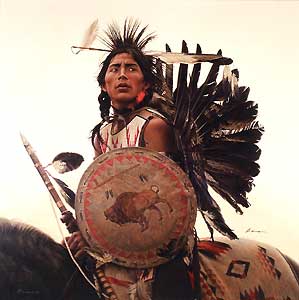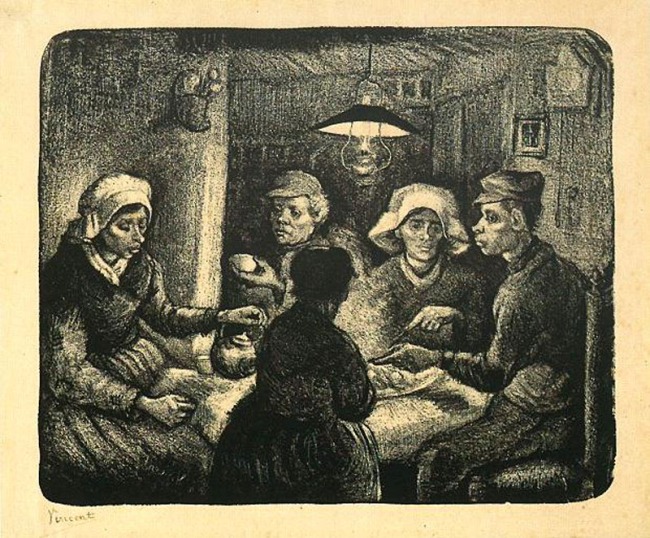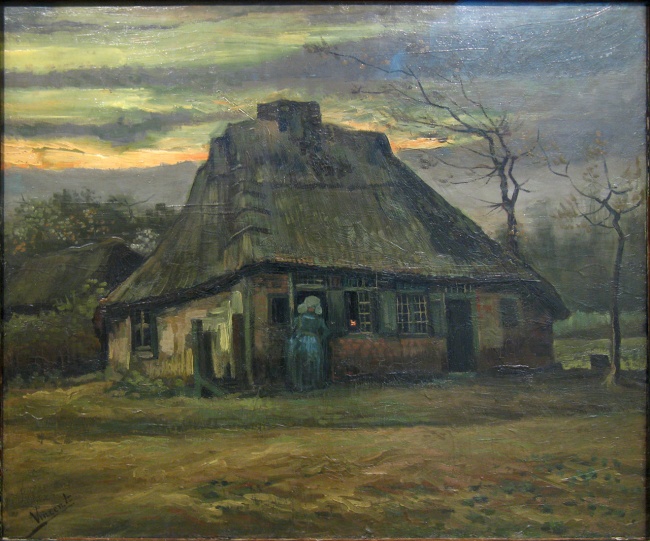DAM:AR is a project based on fostering a deeper engagement between the visitors of the Denver Art Museum and the various pieces and collections of the museum. To do so, different “Frames” have been created, focusing on differing aspects of art, to cause users consider pieces in ways they had perhaps not considered before. These Frames include “Triggers”— prompting questions— that link to forums for users to share their views and converse with other users about pieces (the Triggers are all specific to each piece), “Context Augmentations” which aid in building the users understanding of the different aspects of the piece being viewed, and “Leads” which intend to push the user to explore other pieces of art within the museum that are related to the one immediately before them. Through the combination of all of these facets of experience into a single, combined, and streamlined place, DAM:AR intends to be an enhancement for the museum for all visitors.
Truly the backbone of individual and social engagement, the Triggers included in the Frames are the initial means of engagement presented to museum visitors using DAM:AR. Each Trigger is a specially crafted question, meant to push the user to view the work of art immediately in front of them in a more complex way. For the prototype, the Triggers of each of the Frames focused on a single aspect of the art, be it medium, an emotional or personal connection, the period of the work, the artist themselves, the technique or style of the work, or the subject of the work. In a fully realized, ideal, project, each of these aspects would be brought together in a single frame, with the user able to pick and choose which aspect they wanted to explore. The triggers link to a forum (currently without moderation for prototype purposes, but could easily have moderation procedures implemented), wherein users can respond to the question, read and comment on responses from other visitors, and carry on conversations about the piece. One of the concerns in the creation of DAM:AR was the ability for users to take parts of the in-museum experience out into their outside lives. The Trigger forums of DAM:AR allow for users to continuously interact around the piece, and encourage repeat visits to gain new insights.
Following the Triggers are the Context Augmentations of the immediate piece. These Augmentations may take several forms, be it a link to a biography of the artist (Artist-centric Frames), a history of the time period (Period-centric Frames), or an examination of the piece in regards to its composition (Style-centric Frames). The power of these Augmentations comes in the extremely broad area they are capable of covering. Even within each focus level, the Augmentations broaden the context of each piece, allowing visitors to truly find something they wish to sink their teeth into and explore on their own. The Context Augmentations are, in this way, not intended to be the end-all-beat-all space for new content. Rather, they are intended to give the user new ideas and concepts to self-explore, again an attempt to bring the museum experience out of the physical confines of the museum.
Inside the museum itself, though, DAM:AR aims to aid in directing users to pieces that pique their interest, based on aspects of the immediate piece that they were intrigued by. These are the Links included at the end of the carousels. These are curated selections that point museum visitors to different places and contexts within the museum, in an attempt to scale down the daunting task of navigating the Denver Art Museum. The DAM has such a wide and varied amount of pieces, that moving from one to another, or simply choosing what works one wants to experience on a given day at the museum is, at times, nearly impossible. DAM:AR’s Leads work to make these choices easier.
Of course, the project is currently limited by what Layar is capable of performing. In a ground-up construction of DAM:AR, users would be able to choose the type of engagement for each immediate piece, rather than having one prescribed for them, as the prototype does. Even with Layar, though, the use of specified icons (as exemplified throughout the book) for each type of engagement is a workaround to this problem. Allowing users to choose the kind of experience they wish to have is integral to not only the idealized version of DAM:AR, but also the Denver Art Museums own mission and goals. Still, even in its prototype phase, DAM:AR offers a wide range of user engagement possibilities for the museum, and is a new media platform to allow the DAM to connect more with its users, and bringing something new and interesting to each visit.

























